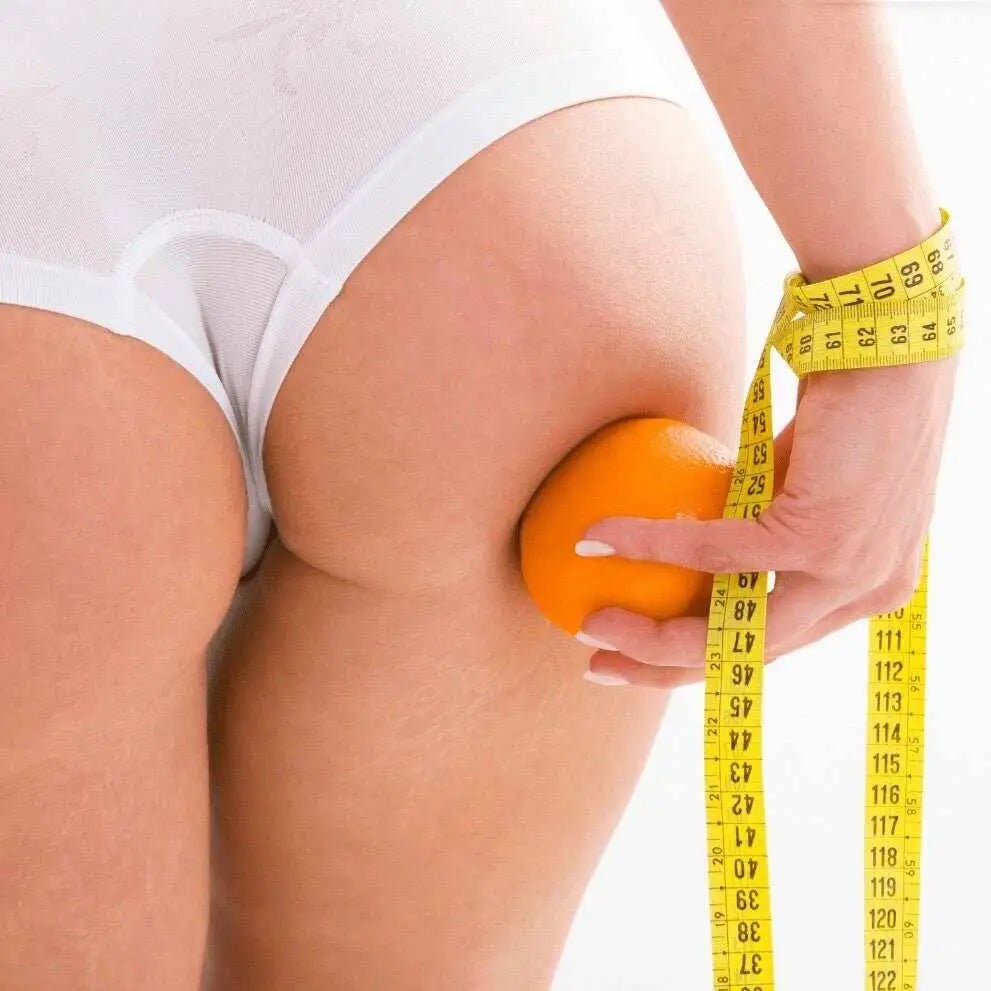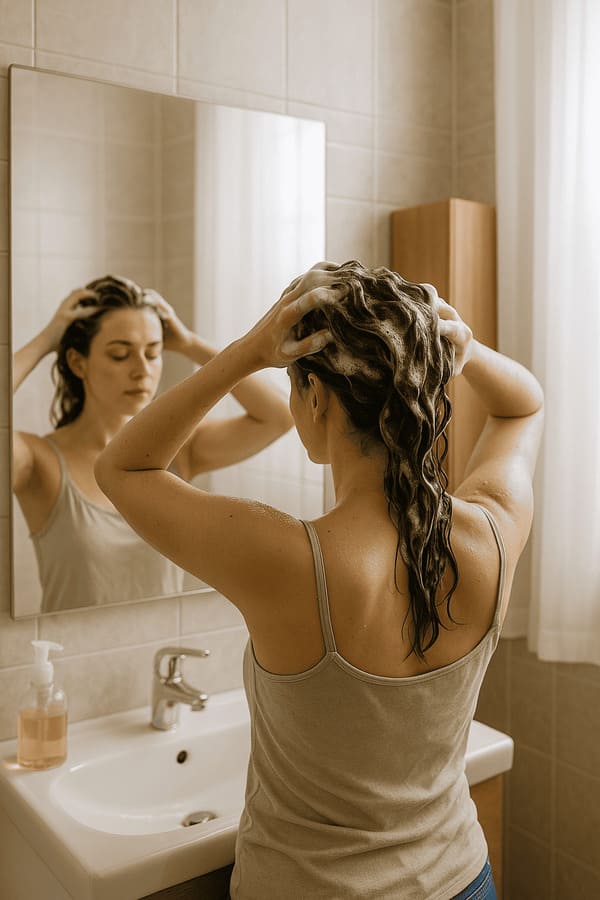Summer is coming and we all get ready to show off our bodies at their best, we start looking for the right product and we find ourselves in a small jungle where the adjectives anti-cellulite, slimming, firming appear repeatedly and we don't really understand the difference.
Often confused and mistaken for the same thing, these three product characteristics are actually linked to very distinct problems. We always tend to focus a little on the famous enemy of women, cellulite, but what if you don't have it and your problem is different?
That blemish that you don't like could be simple water retention or sagging skin or an accumulation of fat .
To avoid confusing them, let's find out what the differences are between cellulite and water retention, starting from the different biological characteristics that distinguish them: water retention is one of the main causes of cellulite, but it is something very different!
Index
Causes and characteristics of water retention
Water retention is the stagnation of liquids and toxins in the tissues, in the interstitial spaces between cells. Its primary causes are female hormones, poor nutrition and lack of physical activity or a sedentary lifestyle. Typically a female problem, it is caused by hormonal fluctuations in the menstrual cycle.
In the phase following ovulation, the premenstrual phase, estrogen levels drop and progesterone levels rise, the lymphatic system struggles in its work of draining liquids and the typical swelling and edema of water retention may appear.
Let's pay attention to our diet and sedentary lifestyle: limit our use of salt, drink lots of water and eat lots of fruit and vegetables.
Include some physical activity in your daily routine. Just 30 minutes a day is enough to help our lymphatic system drain fluids and expel toxins.
Causes and characteristics of cellulite
Cellulite is technically an alteration of the subcutaneous adipose connective tissue. Cellulite is primarily a matter of luck since one of the main causes is genetic predisposition. Hormones, poor diet and a sedentary lifestyle also contribute to the appearance of cellulite.
Cellulite begins to form when blood microcirculation slows down and a stagnation of liquids edema, or water retention, forms. If the retention is not treated, then the fat cells will undergo chronic inflammation and cellulite will progressively advance into its four stages :
first stage defined as " edematous ", characterized mainly by water retention and "orange peel skin"
- The second stage is the " fibrous " one, in which small nodules begin to form and the skin becomes mattress-like.
- the third and fourth have " soft sclerotic " cellulite and " sclerotic " cellulite, in which the nodules progressively increase in size becoming harder and more painful.
How to distinguish water retention and cellulite
As we have seen, cellulite and water retention are not the same thing, even if we often tend to confuse them.
Water retention is an accumulation of fluids that can contribute to the development of cellulite itself, which is an alteration of the subcutaneous tissue.
To distinguish between water retention and cellulite , it is important to observe some key aspects:
Water retention:
- Swelling : The affected area appears swollen and doughy, especially at the end of the day or after periods of prolonged sedentary activity.
- Pressure : When you press on the skin with a finger, a white imprint forms which slowly disappears.
- Pain : It is not generally associated with pain, but can cause a feeling of heaviness and discomfort.
-
Location : It mainly affects the legs, ankles, hips and abdomen.
- Orange peel appearance : The skin appears bumpy and dimpled, similar to the peel of an orange.
- Nodules : When you press on your skin, you may feel nodules or small lumps beneath the surface.
- Pain : In some cases, it may cause pain or discomfort to the touch.
- Location : It mainly affects the thighs, buttocks, hips and arms.
In addition to these differences, here are some other tips to distinguish between water retention and cellulite:
Pinch effect : When pinching the skin between your fingers, if "dimples" form, it is more likely to be cellulite.
Evolution over time : Water retention tends to fluctuate over time, while cellulite is a more chronic problem that tends to get worse if left untreated.
Remember: both water retention and cellulite can be successfully fought by adopting a healthy lifestyle that includes a balanced diet, regular physical activity and, if necessary, the use of specific products or professional treatments.
Anti-cellulite to fight cellulite
The best anti-cellulite products include among their active ingredients draining agents such as Drosera, Pineapple, Birch, Centella, Troxerutin and Bakuchiol.
They are substances that fight water retention and promote the drainage of liquids.
Consistency is required! They should be applied with a massage at least twice a day, in this way a drainage mechanism is triggered and the appearance of the skin improves significantly.
To improve your anti-cellulite routine, I recommend trying the Remodeling Body Cream by Yuniwa Cosmetics , a cosmetic with anti-cellulite, draining, lipolytic action, formulated to combat cellulite and localized adiposity. Excellent for everyone, thanks to its formula without algae and essential oils, which allows its use even during pregnancy, breastfeeding and with thyroid pathologies.

Slimming products for fat deposits
The best slimming treatments contain active ingredients with lipolytic action, that is, which dissolve fats, such as the aforementioned caffeine, algae extracts, essential oils of rosemary, cypress or phosphatidylcholine , a specific active ingredient which reduces the size of fat cells.
For best results, apply twice a day, with a targeted massage from bottom to top and circular movements with pinching.
As a slimming treatment, simple to apply and with a long-lasting action, I recommend you try the Yuniwa Remodeling Body Gel , with a fresh and smooth texture, quickly absorbed. Thanks to red and brown algae, and essential oils of rosemary, cypress and oregano, it combats the formation of fat deposits and reduces existing ones, simultaneously combating edematous and fibrous cellulite.

Firming for loss of tone
Do you feel like gravity is getting the better of your skin?
What you need is a firming product that helps regain elasticity.
Firming is not about fat or water retention, it's all about skin tone.
It often happens that you need to firm up your body after losing weight for example, or after a long period of sedentary lifestyle and lack of physical activity or simply because time passes: after the age of 40 you gradually begin to lose collagen , the protein responsible for skin firmness.
The areas of the body most affected are the inner arms and thighs.
Here too, consistency is the best ally together with the most suitable products, obviously eco-bio.
For example, try the Hydrating and Firming Body Butter by Yuniwa Cosmetics , a soft cloud that melts into your skin, giving you just the right amount of time for a pampering and firming massage. Thanks to urea, natural sugars, wheat proteins and Kigelia Africana, it gives your skin tone, elasticity, softness and deep hydration, protecting it from sagging and signs of aging.

Interested in more cellulite tips? Check out our guide to natural anti-cellulite remedies !
Continue to discover our tips on the natural body routine in the body section of our blog !
[ApSC sc_key=sc3148331291][/ApSC]








